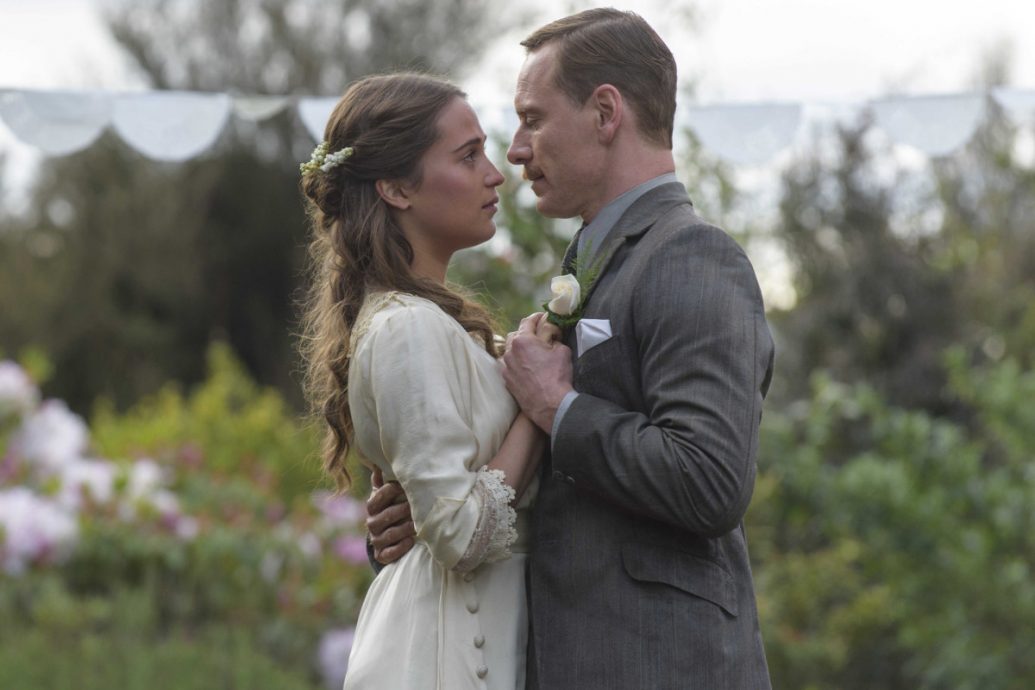The Conscience and The Light Between Oceans
The Light Between Oceans is fascinating and even important film. Directed by Derek Cianfrance and based on the novel by M.L. Stedman, it’s a gorgeous if overly long examination of mercy, passion, and the slow working of the conscience.
Tom Sherbourne (Michael Fassbender) is a numb and grief-stricken veteran of the First World War who takes a job as a lighthouse keeper on Janus Rock, an uninhabited island on the edge of Western Australia.
On one of his occasional trips back to the mainland to check in with his boss, Tom goes out on a date with the boss’s daughter, a pretty young woman named Isabel (Alicia Vikander). In fact it is Isabel who asks Tom out by abruptly announcing at dinner that he has asked her to go on a picnic. Untrue—but rather than trickery, this represents mercy. Isabel can read the roiling desire, the longing for healing, behind Tom’s placid, war-weary face.
Fassbender and Vikander are first-rate in these roles, Tom a wounded contemplative who is brought back to life by the brave, intelligent, and caring Isabel. The couple marry, but Isabel suffers two miscarriages. The first occurs while Tom, unaware of what is going on, is in the lighthouse during a violent storm. The sequence is a tour de force of suspense and tone, a refreshing example of how transporting the use of gritty natural elements can be in the age of shiny CGI effects. You feel like you are in the storm.
When skies clear, and in what is obviously quite a coincidence, one day Tom and Isabel rescue a baby girl from an adrift rowboat. There is also a dead man in the boat, a German named Bluey Smart whose heart gave out when he was harassed by angry townspeople after the end of the war. Here The Light Between Oceans gets in some virtue-signaling in regard to racial profiling (although social justice warriors in the audience might feel confused about having to root for a dead white male, and a German at that).
Certain that the baby is an answered prayer, Isabel convinces Tom that they should keep her. Fassbender is exquisite in these scenes; while some critics have described him as the war veteran stoic simply trying to make his wife happy, in fact there is a small streak of selfishness in this character, which the actor taps into with revealing subtlety. Isabel’s love drew him out of his trauma and grief, and by supplying her happiness, he is maintaining his own sanity. Tom reluctantly buries the dead body. He and Isabel name the girl Lucy—a name that, while this is not mentioned in the film, comes from the Latin word meaning “light.”
The extralegal adoption of Lucy starts to unravel when the baby’s actual mother, Hannah Roennfeldt (Rachel Weisz), who lives on the mainland, begins to suspect that Lucy is actually Grace, the child she thought was lost at sea. On a trip to the village to have Lucy baptized, Tom sees a woman in black, mourning at a graveside—giving poignancy to the baptismal ceremony, where he is asked to renounce the devil and all his works.
As Lucy grows older, Tom discovers clues about her real parents and his conscience begins to make demands on him. The secret requires many others, as secrets often do, and it becomes harder and harder for Tom to cover for Isabel when the police start asking questions. The film’s ultimate payoff is satisfying, arguing that it is often a forgivable offense to be willing to do anything to make those whom we love happy. Those we have offended, if merciful, will meet our contrition with tenderness.
Reviewers have criticized Cianfrance for what they see as an overly melodramatic style. But while there are some over-the-top elements in The Light Between Oceans, for the most part the director captures strong emotions by simply getting out of the way and letting nature and his fine actors tell the story. At the points where the film borders on soap opera, Cianfrance manages to pull back just enough to let a small element of understatement to work its way back into the film.
Thus it does not seem strained that Hannah would forgive Isabel, and even negotiate returning Lucy to her under certain circumstances. The steady work of the actors and the breathtaking cinematography by Adam Arkapaw lend the situation a human touch that makes it believable. Through the camera’s eye the ocean is both a giver of life—it’s where Lucy comes from and where human life originates—and the brutal destroyer of the most precious things.
In a style that is similar to Terence Malick’s, Cianfrance cuts between wide vistas and intimate close-ups. If this movie has a drawback it is not that it is melodramatic; even the musical score by Alexandre Desalt is less bombastic than that of other modern films dealing with less weighty issues. The problem is that it is simply too long. If editors Jim Helton and Ron Patane had cut 20 minutes and the tacked-on ending, The Light Between Oceans would have been more powerful. Indeed, it might have become something of a classic.
